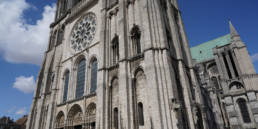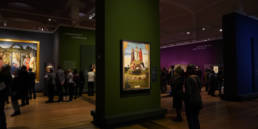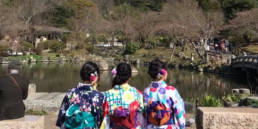Dublin: a city that boasts the Jameson Distillery and “Guinness Experience” but announces last call at 11.30pm. Where winter temperatures hover right around freezing but girls frolic about in mini-skirts, bare legs and stilettos. Where companies like Google, Facebook and Apple have their European Headquarters yet unemployment hovers around 14%. Dublin is a city that you think you understand but ultimately leaves you just a little bit confused as to what is really going on. Here are some points of interest that, even on a weekend trip to Dublin, will give you a glimpse into the city’s seemingly contradictory nature.

According to the Brits, the Irish are their poor, estranged, farming cousins but the fact that some of the world’s best writers such as Samuel Beckett, James Joyce and Oscar Wilde are Irish proves there’s more to them than potatoes and rolling hills. Trinity College is a great example of Irish academic and literary tradition and is definitely a must see for any Dublin itinerary. A few points of interest include:
- the central library which has an exhibit showing off the Book of Kells (not to be confused with the cartoon film “The Secret of Kells”) a beautiful religious manuscript that dates back to 800 AD
- the library itself with towering book shelves that served as inspiration for the Jedi Archives in the Star Wars prequel films
- Aldo Pomodoro’s bronze statue “Sfera con Sfera” (Sphere Within a Sphere) which has sister versions in Rome at the Italian Ministry of Foreign Affairs and within the Vatican, in front of the UN building in New York and in the Hirschorn Sculpture Garden in Washington, DC. (P.S. the statue is designed to spin so if you have the chance, give it a whirl!).
As an American in Dublin you might think you know Irish culture through such activities as: wearing green on St. Patrick’s Day, listening to Mumford and Sons (for the record, a British band from South London), and ordering the occasional Irish Car Bomb when out with friends (Note: Do not order this in Dublin. Definitely not a thing there). Naturally this leads to confused looks when it’s revealed that the Irish are actually Vikings. No, but seriously, the country’s ancestry descends from Norway when around 800 AD Vikings came plundering through, reaching as far south as the French coast. If you want to learn about Dublin’s Viking history you can spend a few hours visiting Dublinia, the museum dedicated to “Viking and Medieval Dublin.”
If you’re short on time though, and don’t particularly care for creepy life-sized Viking figurines, skip the museum and head across the street to Christ Church Cathedral. The Cathedral, which has an interesting history in and of itself, boasts the crypt of Strongbow, the legendary Norman warrior who I can only assume the delicious cider drink is named after.
So Vikings may not have lived in castles but the Normans were decidedly fond of them. The creatively named “Dublin Castle” is a testament to their proclivity for crenelated walls and is just a short walk from Trinity College. On the grounds of the castle is the award winning (and free!) Chester Beatty Library. Now, one might think a library at the Dublin Castle would have on display old Irish books, texts or perhaps even relics. But then again this is Dublin. What the library actually consists of is Sir Alfred Chester Beatty’s (aka The King of Copper’s) personal collection of art, books, scripts and furniture from East Asia and the Middle East among other places. The museum is well curated, modern, and extensive. Definitely worth a gander, even if simply to ask yourself the question, “How did I end up looking at old versions of the Qu’ran in Dublin?”
Finally while Dublin is not an art city in the traditional sense, it is filled with musicians who play both contemporary music as well as traditional Irish tunes. If singing along to “The Wild Rover” or “Molly Malone” is your dream then just follow the other tourists into any Irish pub with a sign outside for live music. It is highly recommended, though, to find a spot that is not on the itinerary of one of the many city’s many pub crawls. Then follow up a night at the pub with a trip to Grafton Street to see arguably some of the best street musicians of any major city, as well as to put into context this odd, yet iconic statue, of Molly Malone while humming “Crying cockles and mussels, alive, alive o!”
Sign up to receive future blog posts by email
Christina
Christina Craver grew up in Silver Spring, MD, where she lived a stone’s throw away from some of the country’s best (and free!) museums. She is, as the Hawaiians would say, “hapa,” and has garnered many confused looks, and some ridiculous guesses, about her background everywhere she goes, from Los Angeles to Riyadh. Christina completed her Masters in EU policy in Florence and, after a stint in the EU parliament, now resides in Trento, Italy. She works in marketing and communication and writes for the satirical blog More Europe! She enjoys watching formulaic t.v. food competition shows, being mediocre at many languages, and confounding people with who she is, where she comes from, and what she’s doing in their part of the world.
Related Posts
September 18, 2019
Re-Discovering Chartres: the Gothic Cathedral and Beyond
March 31, 2019
Mantegna and Bellini – Berlin exhibition review
May 1, 2018








